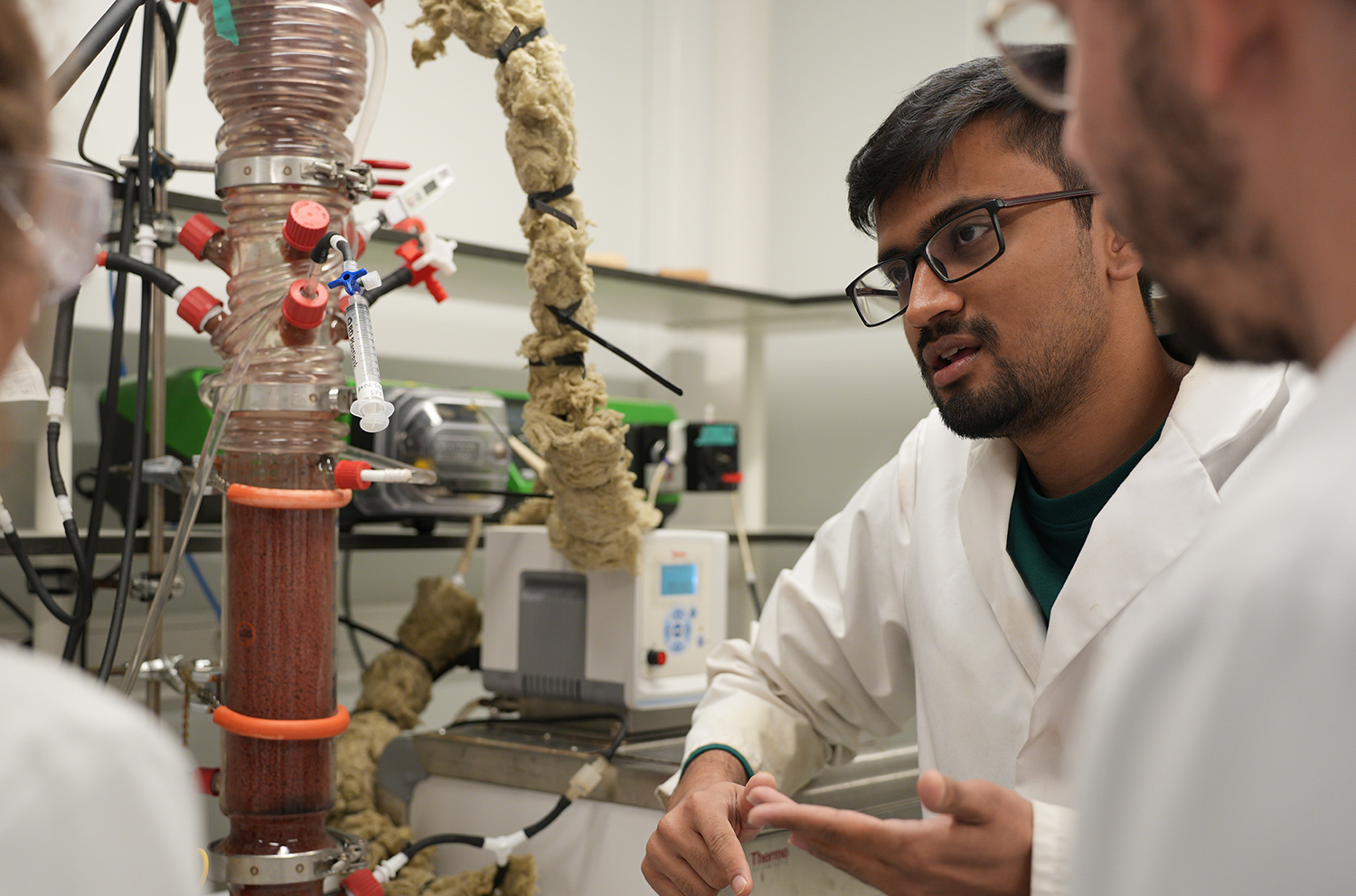Thermophilic anaerobic digestors treating sewage sludge and other industrial processes produce warm nitrogen-rich wastewaters (>45⁰C) that are currently being treated by cooling to mesophilic temperatures. This approach presents major operational challenges, increasing the treatment costs and compromising the sustainability of the treatment plant. While the anammox (anaerobic ammonium oxidation) process-carried out by a group of anaerobic chemolithoautotrophic bacteria-offers an energy-efficient alternative for nitrogen removal, its application has been largely limited to mesophilic (<40⁰C) conditions. The growth and performance of anammox bacteria at thermophilic conditions (≥50°C) is hardly explored.
A recent study carried out by a PhD student Badri Narayan Ravikumar, led by Prof. Ramon Ganigue, reported the first successful cultivation of thermophilic anammox granular sludge from a planktonic enrichment culture and achieved the highest nitrogen removal rates ever obtained at 50°C. “It is absolutely essential to cultivate thermophilic anammox bacteria in the form of spherical granular biofilm, as the granular biofilm makes them more robust in handling fluctuations in environmental matrices, increases their retention ability within the reactor, thereby overcoming key bottlenecks for the deployment of thermophilic anammox culture in practice”, explains Badri. “With a long term continuous upflow reactor operation, we explored the role of cell retention, uplfow velocity (shear stress) and settling on transforming free-floating thermophilic anammox cells into robust granules. With granular thermophilic anammox biomass, we successfully demonstrated excellent nitrogen removal rates under thermophilic conditions.”
This work not only advances the scientific understanding of anammox granulation at elevated temperatures, but also opens new avenues for the development of thermophilic anammox biotechnologies, offering a promising solution for sustainable and cost-efficient nitrogen removal from nitrogen-rich wastewaters at elevated temperatures.
